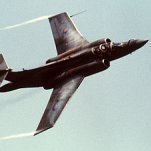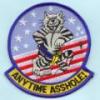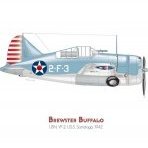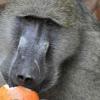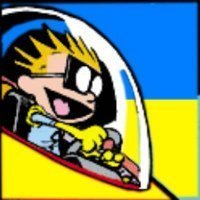Search the Community
Showing results for tags '1/72'.
Found 6,956 results
-
Airfix is to release in 2014 a variant from the new 1/72nd "fabric wings" Hurricane (ref.A02067), a Hawker Hurricane Mk.I "metal covered wings" under ref. A01010. A fabric wings in the illustrations/box arts??? Displayed as ????? Error? Source: http://www.airfix.com/shop/new-for-2014/172-scale-military-aircraft/a01010-hawker-hurricane-mki-172/ But also as stater set (fabric or metal covered wings Hurricane?) Ref. A55111 Source: http://www.airfix.com/shop/new-for-2014/172-scale-military-aircraft/a55111-hawker-hurricane-mki-starter-set-172/ V.P
-
Originally I intended to build this one as a Russian two-seat artillery observer, which would also take care of the problematic fuselage spine. In the end I just made a (relatively) quick build of it. It did receive some new wheels, a new prop and the cockpit was reworked. Cheers, Luka
-
This time it'll be WIP as well. Plan is for Soviet tank, with some infantry in a snowy Finnish forest...... will see.
- 29 replies
-
- 6
-

-
I hardly dare to post this when I see some of the exquisitely crafted models on this forum, but this might encourage those who lack patience, as I do, but want an good result with minimum effort. More photos and build notes on this page of my web site: Vietnam Super Sabre
- 14 replies
-
- 27
-

-
Evening all. I’m just putting down a bookmark for this GB. I will get round to starting this soon but modelling is on hold at the moment for various reasons. As the title says I’m building the old Hasegawa birdcage Corsair. It is a kit very much of it’s time with a spartan cockpit and raised panel lines. I have built the Hasegawa F4u-1a and it is a nice simple build and I expect this will be no different. This will be FAA F4u from 1835 squadron in extra dark sea grey/ slate grey over Sky. Having done some reading tonight I believe 1835 Squadron was once of the first to get the Corsair in 1943. Here are some pics. Decals are from the Skymodels sheet. Hopefully I’ll be able to start this soon but I first have to finish my Spitfire IX for the GB. Cheers Allan
- 35 replies
-
- 10
-

-
Today I want to present "civilian" version of TBM-3 - Tanker 74 Model is based on Hobby 2000 TBM-1C (#72010) kit, decals from Draw Decal (No. 72-TBM-1) with some scratch added (to be honest - some decals are home-made too; Draw Decals set have not enough digits to make a complete miniature). There's no WiP from that build but if someone will be interested in short story - I've some photos in backup Some data (and photos) about this Tanker you can find e.g. HERE. Back to model (LARGE photos - click on miniatures)
- 25 replies
-
- 40
-

-
Having finished my classic Revell 1/72 models of the Stearman Kaydett and Boeing P26 Peashooter I wanted to display them in flight.....and this is what happened: Just a bit of fun...enjoy!
-
In something of a departure from my usual mileau (I usually bodge WW2 RAF), I'm sticking an Airfix Lightning F2A together and I need to find some seat belts. My Google skills appear to have deserted me because I can't find any suitable etched belts. I know Eduard did an interior set but I just want the belts. Can anyone point me in the right direction? Thanks in advance.
-
Hello, I had a long journey with that kit - it's easier than mk.I, however my low skills caused several problems on various steps. I cannot wait for 1/48 kit which should look as 1/24 in the box. 😀
- 20 replies
-
- 53
-

-

-
Planning to build and paint this Sea Harrier, alongside my Airfix project. Bought at SMW2008 for £10.40 (probably from Hannants, probably IPMS discounted.) As this option. I've already build an 801NAS FA2, and am building Airfix Satan 1 - 800NAS. Decals and parts. I'll contact Phantome to ask to see his photos. It doesn't sound a great kit, so might shape my decisions.
-
Looking forward to building my first Corsair for this Group Build. I'm very tempted to go for the VMF-212 Gloss Navy Blue version piloted by Captain Philip Delong. Scalemates link.
-
Hi All, a Place Holder for Tomorrows Start I have a "In the Navy GB" F2A-2 Buffalo in finals, and a RNZAF P40M also on finals, so should be able to get into this fairly soonish The Kit box I want (given timing) to recreate this scene from an RNZAF Photo in the Book "New Zealand's Golden Age of Flying Boats" The Sunderland is being "Warped" into the Braby at Lauthala Bay, Fiji (Photo used for illustration only) I plan to keep the build fairly simple, but build a "Proper" Interior. For your viewing pleasure, a Film showing the arrival of the 4 Sunderland's into New Zealand. Yes, after thousands of Miles/Km's without major mishap, one of the escorting Hudson's collides wing tip to wing tip - Thankfully both aircraft and crews landed safely Arrival of the RNZAF Sunderland Mk III's See you all after the kick off Regards Alan
-
Hello all. Here is another boat I have recently finished, the Airfix 1/72 Severn Class Lifeboat. I have had this in the stash for quite a long time, but back in October I decided to finally give it a go. I had heard numerous stories about it being a difficult kit to get together. First thing I did was check the transfers, and found they were unusable - I had not stored them properly and the instructions had stuck to them. I contacted Airfix and bought a replacement set, and then I was set to go. One online build suggested building the superstructure off the hull, and then fitting the interior and checking the fit by putting the cabin in place. If it did not fit, you know which part was causing the issue! I found that it worked, and a bit of trimming on some internals and all was well. I brush painted the model, the orange was the most challenging part. I used Revell acrylic and gave it three coats. All looked well. The one other thing that needed work was the dinghy. It was rather plain, so I put a sheet of Kleenex tissue (cut to size) over it, and then smeared thinned PVA over the tissue with a cotton bud. That dried nicely and tautened up the tissue, and gave quite a pleasing result that I was happy with. Here she is: I found the original boat (17-28 Torbay lifeboat) was named after Alec and Christina Dykes, so I typed that up in 'Word' at 5pt size onto normal paper, cut it out and attached the two nameplates with PVA, and the boat was done! As for the replacement transfers, they went on well, but I did find the red and yellow stripes split, but a little bit of repositioning sorted that, and I now cannot see where the split occurred. All in all, I really enjoyed this one, but if I did another I would leave out a lot of the interior, it would go together even better then, I reckon! Thanks for looking, Ray
- 10 replies
-
- 24
-

-

-
A kit that harks right back to 67, i built it mid ,late 70s ,one of the first kits i painted when i was judged to be able not to make too much mess! I painted it white ,after i had seen a storch in winter camo in a book from the library,i always used to get war,and aircraft books out,i didn't realise back then it was early days research,many times i used to get a library fine for not returning a book on time, Heres a picture of the kit the kit box ,the real one was flattened (squashed) down to fit through the letter box😳 After a brief check yesterday the plastic is unharmed, the box resembles an accordion though
- 47 replies
-
- 13
-

-
My contribution to the GB will be the Hasegawa 1/72 UH-60A Black Hawk. The build will be OOB, with Hawkeye Decals to represent one of the Black Hawks used by the RAAF Aircraft Research and Development Unit. I've so far stuck with fixed wing aircraft, so I think it will be a nice change of place to give a whirly-bird a shot.
-
Hello all, Here is my recently completed 1/72 Hasegawa Lancaster B.1 Special. On the 19th March 1945, PB996, YZ-C, was piloted by Flying Officer Phil Martin, DFC and bar, on an operation to destroy the Arnsberg Viaduct in Germany. Dropped from 12,000 feet, the 22000lb Grand Slam bomb impacted the Western end of the viaduct, along with four Tallboys, causing it to collapse. Extras used included Eduard interior etch, Eduard canopy mask and AML camouflage masks. Paints are a mixture of MRP for the upper surfaces and Tamiya 'Nato Black' for the undersides. The build thread is here A picture of the real thing to start: My effort: Beside my other two 617 Squadron 'Specials': Thanks for looking. Dave
-
With all the interest in Tiger Moths recently (in both 1/72 and 1/48 scales), I thought I would post some WIP shots of my slowly-progressing multi-build project based around the 2014 Airfix kit in 1/72 scale. I've seen a fair few of these built now, but unsurprisingly most end up as WW2 trainers or post-War civil aircraft. But my interest is mainly in the original pre-War machines, of which I am building 4 examples. Two of these are being converted to the original DH 82 variant, of which around 150 were produced prior to the design changes which led to the mass-produced DH 82A. Don't think I can recall seeing any DH 82 models before, so should be an interesting exercise. Main characteristics of the DH82 vs 82A were a Gypsy III engine installation instead of Gypsy Major, a stringered, fabric-covered rear upper fuselage instead of the familiar moulded plywood 'canoe', different cockpit doors and instrument panels, along with a number of more minor differences. Most of the DH82s were military trainers for various countries and a few civil aircraft. Probably the most famous were the aircraft of the CFS aerobatic team, taken from the very first batch of RAF deliveries, so I will be building one of these along with one of the civil aircraft. The two DH 82As will also be early civil aircraft. As has been well-recorded, the Airfix kits are a very good basis, but with many fine details omitted, which is to be expected (some of which are rectified in the 1/48th kit.) One of the best features of the 1/72 kit is the correct shape of the upper surface of the wing tips, which are poorly rendered in 90% of injection moulded kits representing fabric-covered aircraft. On the other hand, there are some surprising omissions, which give the impression the CAD-designer got the job 95% done before being distracted prior to it being completed. The technology Airfix use for their mould-making also seems incapable of reproducing very fine details. Strangely, the parts fit on all 4 kits (purchased at different times) was different, with slightly warped or distorted components on some. The lower wing to fuselage fit on one of the kits was good, but the other 3 all required material removing in varying amounts to obtain a good fit. On to the photos: The 4 fuselages, the 2 DH82s uppermost. The rear upper fuselages of the latter were cut away and replaced by stringered inserts. The baggage compartment behind the cockpits on the '82 was also shorter than on the '82A. The oil tanks were removed and replaced by new, smaller ones appropriate to the smaller-capacity Gypsy III engines powering these early aircraft. Cockpit doors have been changed by filling and re-scribing, where appropriate. All 4 aircraft had the early 'rectangular' rear doors, rather than the angled rear edge, which was introduced to clear the blind-flying hood. RAF aircraft (2nd down) has the large, square forward doors only fitted to the first few aircraft to aid egress, but soon found to be unnecessary. Early Tigers had a foot stirrup beneath the rear cockpit on the RHS, added here on all 4 aircraft. The stirrup positions were slightly different on the 82 and 82A, so meticulous study of photos pays dividends ! (The stirrup was deleted pre-WW2 and replaced with a pair of hand-holds in the the fwd cockpit bulkhead, so the Airfix omission of it is quite legitimate. )The 'trenches' for mounting the grossly-thick injection moulded windscreens have been filled. One of the surprising omissions in the Airfix kit is the rather prominent stiffeners along the top edges of the doors (which look like car bumpers), which were added from stretched sprue of the correct scale cross-section. Venturis for the suction-operated 'Turn & Bank' indicator,not on these early aircraft, were also carved off. The one-piece nose piece of the Airfix kit has been quite cleverly moulded, but there is considerable scope for improvement. There has been some discussion about the fitting of this piece, but it fits perfectly if small chamfers are added to the top edges of the 2 mounting pips on the front of the fuselage halves. There has also been discussion about the shape in profile. but superimposing it on a dead-on side view photo, the upper angles are fine. But I did find the lower panel is slightly too inclined upwards towards the front, so the resulting 'chin' isn't quite prominent enough. So I cut the lower panel away, to replace it with a shaped piece of thick plasticard. This also facilitated removing the moulded-in engine cylinder, which is sort of ok, but I prefer the better fidelity of making a new separate one. The various small intakes were also fully opened out, as was the hole behind the prop and the crankcase nose added. Cowls from the RHS. 2x DH82 on the left have had new, more bulbous carburettor intakes added near the rear for the Gypsy III engine and the locating depressions for the kit part filled. 2x DH82A on the right have new intakes made as Airfix parts are too small and conical-shaped. 2 miniscule quarter-turn cowl fasteners have been added along with the tiny air scoops near the front. Cowls from LHS. Again, 2 quarter-turn fasteners added, plus small air scoop ahead of oil tank position. Piano-hinge was very softly-moulded compared with the RHS, so has been replaced with stretched sprue, matching the crisper definition of the RHS. Top of the cowls. One of the Airfix downsides is that they slavishly copy preserved aircraft without cross-checking against vintage photos. A case in point is the corrugated foot step (for refuelling the wing tank) on top of the cowl. This was originally to support the right foot only, but on the aircraft Airfix copied (Shuttleworth, I think), this has been extended. Scaling from vintage side view photos, it should be 4,5mm long vs around 8mm in the kit. So they were carefully cut bask by shaving with a new scalpel blade, quite a tricky operation. Cowls from beneath, showing removed lower panel and moulded-in front cylinder opened out. New cowl lower panels from shaped plasticard with new front cylinder mounted. 3 of the 4 aircraft I'm building had no slats on the upper wing. These were an optional extra on the early civil aircraft, which could be had for the princely sum of £50, (£40 of which was a royalty payment to Handley-Page...) The CFS aerobatic team also had the slats removed to prevent inadvertent actuation during vigorous flying. So the slats have been carved off and the nose riblets restored from small stretched sprue lengths blended with paint filler to match those on the inboard section. Painstaking work which took about a week to complete. (The slat control quadrant moulded on the RH wall of the rear cockpit also needs shaving off...) I started this project in the expectation that it would be a straight-forward diversion from my more arduous projects, but I should know by now, there is no such thing ........
- 20 replies
-
- 30
-

-
The Junkers D.I was the fruit of pioneering research by Prof. Hugo Junkers. Small-scale production of the type began too late for it to see front-line service in the Great War. During 1919, however, some were employed in Latvia by a freikorps body which came to be known as the 'Iron Division', which fought in turn against Bolsheviks and Latvian and Estonian nationalists. That the wing of the Junkers D.I employed a thick airfoil, and was set below the machine's thrust line, is of greater significance to aviation's development than the type's all-metal cantilever construction, for these improvements in generating lift discovered by Prof. Junkers directly influenced a good many subsequent designs. An aeroplane did not have to be a monoplane to benefit from employing a thick airfoil, a monoplane's wing did not have to be cantilever for it to benefit from being positioned below the thrust line, and a cantilever low-wing monoplane did not have to be of all-metal construction. When all-metal cantilever monoplanes with low-set wings did become general during the 1930s, they employed structural methods owing nothing to the Junkers design. Prof. Junkers' first attempt to build a low-wing cantilever monoplane completely of metal took to the air at the start of 1916. A complex tube structure clad in thin sheet steel, it was far too heavy to climb or manouver well, though it had a decent turn of speed in level flight. After much research into working duraluminum, Junkers managed to produce by late 1917 a prototype whose performance and weight matched that of contemporary biplane fighters built of wood and linen. Two pilots of the naval Marinefliegerkommando flew this first prototype and spoke well of it. During trials of the final prototype D.I early in 1918, however, army pilots of the Luftstreitkraft found the machine deficient in manouverability at altitude, and thought it really suitable only for such specialized low-level work as destruction of tethered observation balloons. Both views owed something to the machine's all-metal construction, with the army pilots recognizing the strength and durability built into the type, and the naval pilots appreciating its imperviousness to damp, which brought quick deterioration to machines of wood and linen on the Flanders coast. Still, this prototype made a good enough impression on air service procurement authorities that Junkers received a small but open-ended production contract for the D.I. The first completed example rolled out from the Junkers factory at Dessau in August, and in October several were shipped off to a naval unit in Flanders. There is no evidence that before the Armistice was signed these were flown for anything but evaluation and training well behind the lines, though one was found to be peppered with rifle-caliber bullets when taken in hand by Allied forces in 1919. Junkers continued building to his contract until February of that year, though the machines seem to have remained in the factory yard (there being no air service to deliver them to), and it is unclear whether Junkers received any payment, and if he did, from whom it came. For roughly a dozen Junkers D.Is became part of the aerial strength of a private force of armed German soldiers who came to the Courland in Latvia late in February 1919 to fight Bolsheviks. This was formed on a nucleus of officers and men from the demobilized 1st Guards Reserve Division, who dubbed themselves 'The Iron Brigade'. Initially, at least, this early freikorps body was not a mere armed gang of political freebooters but a proxy army executing both Allied and German policy. England, France, the United States, and Japan all had forces operating in Russia against the Bolsheviks, and welcomed the assistance on the Baltic coast of a German force which was recruited with encouragement from Gen. Groener, the German Army's current chief of staff. The aviation unit of this 'Iron Brigade' was recruited by Lt. Sachsenberg, a distinguished Marinefliegerkommando pilot. He was one of the naval pilots who had test-flown the first prototype of the Junkers D.I late in 1917, and was during January 1919 at Dessau himself, superintending the demobilization of his naval fighter detachment. One way or another, Lt. Sachsenberg received some thirty-odd Junkers all-metal monoplanes, both D.I and Cl.I types (the latter being a modestly larger, two-seat version of the D.I single-seater). With these in hand to serve respectively as a fighter detachment and a close-support detachment, a sufficient number of Rumpler C.IV two-seaters were then obtained, giving 'Kampfgeschwader Sachsenberg' a reconnaissance detachment as well. The situation the soldiers and aircrew of this 'Iron Brigade' were pitched into in the Courland districts of Latvia late in February, 1919, was both extremely complex and quite precarious. The Armistice of November 11, 1918, had required German soldiers stationed on the Baltic coast to remain there. A week after the Armistice, Latvian Nationalists declared an independent Latvia. This was promptly invaded by a force comprising both Latvian and Russian Bolsheviks, which quickly bested Latvian Nationalist militia. While the Bolsheviks were advancing westwards, the Latvian government recruited German soldiers, demobilized from the former occupation force, to form a fresh body of militia. These fared no better against the Bolsheviks than had the Nationalist militia. By the time the 'Iron Brigade' arrived in Latvia, most of the country was in Bolshevik hands, including the great port of Riga. The Latvian government, and its Nationalist and German militias, held on only around the smaller but ice-free port of Liepaja, at the extreme southwest of the country. Ethnic Germans predominated here, and had since the days of the Livonian Crusades and the Hanseatic League. There was little love lost between these and Latvian Nationalists, for the Czars had favored the Germans of Latvia to the end, and leaders among the Latvian Germans had before the Armistice proposed the Courland be joined to Prussia. In March the 'Iron Brigade', accompanied by both Nationalist and German militias, struck to the east and north against Bolshevik forces. Lt. Sachsenberg's fliers encountered no aerial opposition, not even on reconnaissance flights over Riga, but their aeroplanes took plenty of enthusiastic fire from the ground while scouting ahead and to the flanks of the advancing columns, and strafing Bolshevik forces caught out on the move or gathered to give battle. As the success of the 'Iron Brigade's' offensive became apparent, newly recruited freikorps bands arrived from Germany, some with their own smaller aerial component, and these additions swelled the 'Iron Brigade' into the 'Iron Division'. Emboldened by these developments, in April a body of ethnic German notables at Liepaja declared themselves to be Latvia's government. The Latvian Nationalist leadership was driven to take refuge aboard ship under the protection of England's Royal Navy, which maintained a squadron off the coast. The emergence of this new 'government' of wealthy ethnic Germans at Liepaja made clear by its very existence that the objective of the 'Iron Division' now was not just to defeat Bolshevik forces, but to establish German control over Latvia. Towards the end of May the 'Iron Division' and German militia took Riga from the Bolsheviks. Their advance deeper into Latvia was opposed now by Estonian Nationalist militia, along with fresh Latvian Nationalist militia raised and trained in Estonia. Late in June, these defeated the 'Iron Division' decisively at the town of Cesis. The beaten Germans retreated to Riga, and in early July, with Latvian and Estonian militia advancing on their heels to do battle for the place, England and France together forced an armistice on all parties. Under its terms the Latvian Nationalist government was to be restored, and the 'Iron Division' with all its freikorps bands was to leave Riga and return to Germany. While these did depart Riga as ordered, most remained in Latvia, thinly disguised as a nominally Russian unit, the 'West Russian Volunteer Army', which styled itself as part of the forces commanded by the Czarist leader Admiral Kolchak. In October this now nominally Russian force of German troops again occupied Riga, but could not hold it long. Latvian Nationalist soldiery drove them out in November, with aid from a Royal Navy destroyer, HMS Vanoc, and from Estonian forces which included armored trains. The routed German freikorps men were driven south into Lithuania, where they suffered a further defeat from Lithuanian soldiers at the railway hub of Radviliskis. After some negotiation conducted under the auspices of England and France, what remained of the various freikorps formations which had fought in Latvia were finally returned to Germany during December. Kampgeschwader Sachsenberg did not participate in the concluding debacle of the Baltic coast freikorps forces. The original 'Iron Division' formation had attached itself to the 'West Russian Volunteer Force' in August, and Lt. Sachsenberg led his airmen back to Germany in September. Gotthard Sachsenberg resigned his commission in the German Navy soon thereafter. He went into business with Prof. Junkers, and headed an organization that helped demobilized soldiers return to civilian life in eastern Germany. Herr Sachsenberg then took up politics, being elected to the Reichstag in 1928 as a member of the German Middle Class Party, a minor party of the petit-bourgeoise. Sachsenberg wrote against German rearmament, and avoided a spell in concentration camp after Hitler came to power only because of the influence his brother wielded, as owner of a major shipyard. This model represents a Junkers D.I of Kampfgeschwader Sachsenberg in early summer, when the 'Iron Division' advanced beyond Riga. It is the Roden 1/72 scale kit of the type, in a boxing which purports to be the proper 'short fuselage' version, but I confess I did not check dimensions. Two small alterations were necessary to make this kit a model of a Junkers D.I as flown in Latvia. The cockpit opening must be trimmed away at the front, so it curves up to meet the breeches of the machine guns, and a panel behind the flap at the nose on the port side of the cowling must be cut away, as this was removed in service to improve airflow through the radiator. A 'bulkhead' (actually a cloth panel) should be added to the rear of the cockpit. The kit includes a set of instruments which follows photographs in the early Windsock number on the type, which I discarded in favor of scratching something close to the illustrations in the Wingnutz kit instructions. The finish given the Junkers D.I at the factory was a spotty pattern of mauve and pale bruswick green on uppersurfaces, with the undersurfaces done in pale blue. On those operated by Kampfgeschwader Sachsenberg this was thinly sprayed over with a grey-green paint, supplemented with an off-white on the undersides, which altered their appearance considerably, and obscured somewhat the German national markings applied to them during production. I used a wash and some daubings of RAF 'Slate Grey' for the grey-green, and a wash and daubings of a pale buff tone on the undersides. The kit decals depict D.I 5185/18, which was one of the machines shipped to Flanders before the Armistice: I altered this to read D.I 5195/18, to get the serial into a range likely to have fetched up in Latvia. The kit went together pretty well, but it is a Roden offering, so there were some odd moments. The cockpit furniture is quite nice, with the seat and stick and rudder bar arrangement first-rate. The engine actually fit to its bearers in the nose, which in my experience is unusual for a Roden kit. The fuselage comes in four pieces (sides and top and bottom) which does preserve the fine corrugate pattern where a dressed seam would be most visible, but the fit of top and bottom pieces to the assembled sides is not too good. A great deal of fettling and test-fitting improved this, but I could not get a seamless fit and in cleaning things up did have to do some damage (hopefully not too apparent) to the corrugation. As the top and bottom pieces seemed a bit too wide, a spreader between the joined side-pieces might well have helped, but I did not think of this in time. The flash protector troughs for the machine guns needed a great deal of thinning to be able to fit into place alongside the motor's rocker arms, and I had to scratch a small panel to set between the machine gun breeches. The kit has many small fittings which require great care to remove intact from the sprues. The decals, as is often the case with Roden, were execrable, managing to be both too thick and terribly fragile. A couple had to be pieced back together on the model. My usual Future setting technique could not pull them down into the corrugation, and a brief experiment with a razor blade did not have good results at all. A final application of Tamiya spray matte got them blended better to the casual eye, at least.
- 13 replies
-
- 22
-

-
- JUnkers DI
- Latvia
-
(and 1 more)
Tagged with:
-
Another of my little tanks. Scene title is 'Republican Corrida'. Bull is form excellent Farm animals set (Pegasus) and fellow from Orion's soviet tankers. Cheers Mick
-
Good day to all, This is number seven for the year, the Sword F3H Demon. Here are the highlights I found of the kit............... 1. The kit is tricky to assemble. I spent considerable time dry fitting before applying glue and bonding parts and sections together. 2. I added metal and brass rod to shore up and strengthen major sections such as the wings to the fuselage, landing gear, horizontal stabilizers, and weapons pylons. 3. There are no alignment pins for the fuselage and the ones for the wings, pylons, horizontal stabilizers, and landing gear are lacking Or insignificant at best. 4. Plumbers putty and small lead fishing sinkers were used as ballast to keep the Demon sitting properly. 5. Decals were excellent. 6. Care needs to be exercised when snipping parts off of the sprue trees as the individual parts are numbered on the instruction sheet and NOT the sprue tree. 7. I broke the photo etched leading edge wing fences numerous times and had to fabricate one as it turned up missing. I also broke the starboard horizontal stabilizer twice during handling. 8. Weathered using washes, pencils, and paint. Post shading process used. 9. Colors used : A. Mission Models US Camouflage Grey FS36622. #MMP-095 ( base upper surface color ) B. Mission Models Lt Gull Grey FS16440 #MMP-069 ( used as the darker panel lines ) C. Mission Models White D. AK Extreme Burnt Metal for the section aft of the exhaust nozzle E. Tamiya Titanium Silver X-32 for the metal undersides and leading edge of the horizontal stabilizers. F. Tamiya Gun Metal X-10 for exhaust nozzle highlighted with Polly Scale Burnt Aluminum G. Tamiya Chrome Silver X-11 for the intake leading edge H. Model Master Dark Gull Grey for the cockpit I. Misc : Flat Black, Insignia Red, Clear Red, Clear Green, Gloss Black, Radome Tan, and Yellow in various sections All comments are most welcomed. Thank you in advance. Respectfully submitted, Mike Here is a view of the upgraded landing gear. I drilled holes and inserted a small brass rod for additional support. I also drilled through a scrap piece ( blue colored part ) to use as a sleeve for the nose gear to provide added support and strength as well. Originally, gear did not come in contact with the base of the gear well. I felt this needed to be added to help support the airframe with the additional ballast weight inserted into the nose section. Here is one of the upgraded pylons. I did this same method for all four pylons and similar procedures for the wings and horizontal stabilizers. NOTE : The lacking alignment pins on the second pylon.
- 20 replies
-
- 38
-

-
Hi Ladies and Gentlemen, well the Ju 87 B-1 I started last January in the "Stuka GB" is at long last finished. The Airfix kit is great and the engineering impressive, so the build was never boring. A bit frustrating at times, but what kit is not. I had not finished a kit for a long time, so this comes as a fantastic breath of fresh air. I did make mistakes that did not facilitate a speedy build. Never too late to learn. -I tried to mix acrylics and enamel paints with the splinter pattern. I was curious to see what the result would be. Well I tried and won't do it again. The ridges one often gets with brush painting are devilishly hard to remove without damaging the acrylic paint... So in many places I decided it was safer to leave the ridges than ruining the whole paint job. Still, a lot of touch ups were necessary. -The closed canopy I wanted to use got damage beyond repair... Don't ask. So I had to use the open canopy, which is really un-fun to use...Painting the inner structure became a moment of intense loneliness. -Because I had masks, I decided to use them, which I seldom do. They worked well but left a sticky residue on the transparencies, that I had a hell of a time to remove! Hand painting them works actually better for me. -Re the decals, I disagree with the background color of the Gruppe shield. Xtradecal gives it light blue on their BoB sheet and I agree with them. So I used most of their decals. The design is not perfect though and I had to use a couple of Airfix decals. The funny thing is that the Airfix decals bedded themselves better in the panel lines than the Xtradecal decals that I found stiffer, even if they look great once on the model. But the above remarks do not mean that I did not enjoy the build. I did enjoy it tremendously, and I would build another Airfix Stuka without any hesitation! So I found answers to some of the question marks I had, and I had a great time. Here are a few photos taken outside today in the harsh African sun. Feel free to comment, as I still have a lot more to learn. Thanks for watching these photos and for your support and advice during this long build! Keep having fun. JR
- 23 replies
-
- 40
-

-

-
Not posted anything for awhile but been steadily completing a few builds so thought I would post them. As per norm for me, mostly all out of box except for Dauntless, all 1/72. All enjoyable, trouble free builds. Think he only issue I had was a bit of silvering on the 262 decals and instructions and web references on the colour scheme were a bit fuzzy, so no idea if historically accurate. Let's just pretend it is This was my second Tamiya IL-2 - might be my favourite kit of all time to build as it goes together so well. Hasegawa Dauntless SBD-3 (did my first ever major bit of surgery to replace the dive brakes) Italeri SM.79 Hasegawa B-25H Hasegawa 262 Tamiya IL-2
-
The Curtiss AT-9 was designed to be difficult to fly and land, or perhaps more precisely, it was designed to mimic the handling characteristics of much larger, heavier, and speedier airplanes. The 'AT' in AT-9 stood for 'advanced trainer', and the aircraft was intended to teach cadets fresh off of primary trainers how to fly high performance twin-engine aircraft, which by 1940 were set to become a large portion of Army Air Force combat equipment. The AT-9 was a product of Curtiss-Wright's Airplane Division at St. Louis. Originally the Curtiss-Robertson company, after Curtiss and Wright merged in 1929 it became the new firm's civil aviation shop. In 1934, while the original Curtiss facility at Buffalo was designing the Hawk 75 pursuit ship, the St. Louis designers were building the CW-19 Coupe. Though this was a two seat aircraft meant for civil customers, with an engine of just 90 hp, the CW-19 was a low-wing cantilever monoplane of all metal stressed-skin construction, and was quite capable of further development with more powerful motors. The lines of its fuselage, and its wing-plan, can clearly be seen in subsequent single-engine designs out of St. Louis, such as the CW-21 interceptor, with its 900hp Cyclone engine, and the CW-22 Falcon trainer. When the design team at St. Louis, led by George Page, set out in 1940 to create a twin-engine transition trainer for the Army (under the company designation CW-25), what they produced was in essence a CW-19 scaled up and altered to accommodate two engines instead of one. The prototype, which first flew early in 1941, had a squared-off fuselage of steel tube and fabric, owing to concerns over whether the supply of aluminum would be sufficient for both combat and training planes, but when the Army accepted the design, this was discarded in favor of the modern all metal construction employed by the Airplane Division ever since the ancestral CW-19. The Army initially ordered 150 AT-9 aircraft, which were among the first items produced at a mammoth new facility being built for the St. Louis branch of Curtiss-Wright with government assistance. These aircraft reached training units early in 1942, and were followed by another 341, plus an additional 300 examples of a slightly modified version, designated AT-9A, ordered in 1942. The AT-9 had a wing loading similar to that of the CW-21 interceptor, but its engines provided only two thirds the horsepower. This relative lack of engine power was at the root of most of the AT-9's 'tricky' flight characteristics. Poor stability in pitch and yaw owed something to this, as the aircraft just was not moving fast enough to give the stabilizing surfaces all the bite they needed, and so did the AT-9's proneness to sudden stalls, for even at its fastest, an AT-9 was not going much faster than its stall speed. A steep descent was required to keep up speed when landing, and pulling up the nose to do a 'three point' landing could easily result in a stall and a wreck. On the other hand, the AT-9 was fully aerobatic, and there were some pilots, cadets as well as instructors, who liked the type immensely, describing it as a 'hot-rod', and a real treat to fly. The AT-9 was certainly a fast and responsive machine by compare to basic trainers, and to other twin engined advanced trainers serving alongside it, such as Beechcraft's AT-10 and Cessna's AT-17. There is room to wonder how the AT-9 might have performed and handled had it been fitted with a pair of 450hp Wasp Juniors, rather than a pair of 295hp Lycomings. This model represents AT-9 41-5891 early in its service at Williams Field in Arizona. This aircraft was one of the very last of the first production batch of 150, and still bears the factory applied national markings, in a style which lingered in training units for some months after removal of red centers and stripes was ordered. The letter 'Y' on the fuselage indicated Williams Field in the sometimes opaque coding system employed by Army training commands, introduced around May of 1942. An in-flight photograph shows this machine with the fuselage codes, but with its cowlings in bare metal, and with no anti-glare panel. Williams Field during WWII became a center for training pilots to fly the P-38 Lightning. Construction of the airfield began in July, 1941, and proceeded under the initial name of Higley Field, after a tiny town nearby (which may account for the 'Y' field code, as the southwest training command often assigned a field a letter taken from the name of an adjacent town). The first group of instructors and ground crew arrived at the new facility on December 4, mere days before the Japanese attack on Pearl Harbor. Training operations commenced in February, 1942, by which time the Williams name was officially in place, memorializing an Army pilot born in Arizona who had died in a crash in Hawaii in 1927. The initial twin-engine complement at Williams Field was a mix of Beechcraft AT-10 and Curtiss AT-9 aircraft. Within a few weeks it became clear that, whatever difficulties might be encountered with the AT-9, those besetting the Beechcraft twin here were far worse --- the dry desert heat of south central Arizona wreaked havoc on the plywood structures and glues of the AT-10, resulting in a rash of crashes which killed ten men. The Beechcraft twins were packed off to more humid stations, and the Curtiss AT-9 became the predominant twin-engined type at Williams, since the only alternative, the Cessna AT-17, was deemed unsuitable for training fighter pilots. By the start of 1943, there were nearly 200 AT-9s assigned to Williams Field, fully a quarter of the whole number built. Cadets put in a seventy hour course on the AT-9 to become qualified for the Lightning. Accidents, it may be safely said, were frequent. One training command in Mississippi, operating 40 AT-9s, recorded 47 accidents involving them in an eighteen month period, with 10 of these wrecking the plane completely, and four causing fatalities. One fairly common cause of fatal crashes was low-level flying, a necessary part of training, but something instructors dreaded because even slightly mishandling the controls of an AT-9 could produce a sudden stall, with no room at all for recovery. Engine failure could lead to fatal crashes as well, for the AT-9 could not maintain itself in the air on one engine, and often it was difficult to open the doors against a stiff slipstream. Early in 1944, a trainer version of the Lightning became available, and the role of the AT-9 at Williams was accordingly reduced, with cadets doing their solo work on the Lightning trainers. The subject of this model, 41-5891, was out of the picture by then. It was wrecked in a crash due to engine failure on May 27, 1943, near Casa Grande, where an auxiliary runway for Williams was located. It was piloted by one John M. Proos, who survived by taking to his parachute. He appears to have been born in 1921 in Michigan, married a young woman while in Arizona, fathered a son born there in 1944, and then gone on to graduate from Notre Dame in 1950. It would be a decent bet that he met the young woman at the USO in Chandler, the nearest town of any size to Williams Field at the time, and the chief resort for men on liberty from the base to socialize. The model is constructed from the old Pavla limited run 1/72 kit. There has been much improvement in the Czech kits, and people have grown less forgiving of the earlier offerings. In its day, this would have been considered pretty decent for a limited run kit. It certainly requires a bit of work. Two things are worth noting particularly. First, unless some work is done on the mating surfaces, the wings will have almost no taper in thickness from the nacelles out to the wingtips. Second, the cowlings should not be straight cylinders, but taper back to the nacelles. Since the cowlings are very thick, and thus the nicely formed resin motors cannot fit inside them, I shimmed the cowlings to increase their diameter a bit, which let the motors fit, and let me file and sand in a good taper to blend the cowlings back to the nacelles. I scratch-built an interior, though I used the kit's photo-etched instrument panel front. On-line reviews of this kit call the panel too wide, but actually, the instruction sheet illustrations, and the kit's placement of the crew's seats, put the panel too far forward. Put where it ought to go, it fits well. To get it there, the seats have to be put where they actually were, right back against the rear bulkhead, not a couple of millimeters before it, as the kit pieces and instructions would have you do. The kit has nice resin blades, but the hub pieces provided are useless, and I made my own. I did not set out to make a vignette with this model. I will say that I am not partial to opened doors and hatches as a general thing. I certainly respect the work many people do to show normally hidden mechanisms, but when the plane is simply there with its innards exposed it just doesn't look natural to me. The sight calls out for some guy in overalls reaching in with a wrench, or at the very least nearby taking a smoke, to my mind. On this kit, the window frames of the cockpit's 'car doors' are moulded on the fuselage halves, while the canopy is a vacu-form piece. Instructions suggest trimming off the door frame and simply placing the canopy, but this would put a seam in a prominent place that I doubt I could clean up properly for a bare metal finish. Nor did cutting the canopy to fit the outer curves of the frames, and cutting out window pieces to place and fit into the door window openings on the fuselage, seem a promising course. So I cut the doors out whole, filled their window frames with clear sheet, then cut the door area out of the canopy, and posed the doors open. By my own lights, I then had no choice but incorporating some people. The figures are from a Preisser set of civilian air and ground crew, and passengers, of the 1930s. All have been greatly altered, and parachutes and headphones added to the instructor (standing on the wing) and to the student (seated in the door). I have seen a couple of photographs showing men going to a flightline of AT-9s, and they did not have on helmets, just caps, and prominent headphones. What the senior officer on the tarmac is doing there I have no idea: anything from offering congratulations on some crackerjack flying just completed, to enquiring whether the cadet really thinks he's going into the air with those unpolished shoes, is possible.... The model is finished in kitchen foil, dulled a bit by boiling in water that eggshells have been boiled in previously, and affixed with MicroScale foil adhesive. National markings are from the kit's decals. The rudder striping decals were much too small, necessitating more touching up than is decent. The kit's 'Army' decal disintegrated after placement when handled, something I have never seen before. I found a suitable replacement in the spares. Wife made the decals for the field code alphanumeric, and the serial run.
- 11 replies
-
- 37
-

-

-
Well I've been racking my tiny little brain for quite some time as to which kit to build for this GB as there were quite a few that came to mind that I used to build a lot of such as the Airfix Dornier Do-217 or Heinkel He-111, or pretty much the entire Matchbox catalogue. But then I had a thought (yes I know that's a rare occurrence before any of you comment) the age limit on this goes up to 18 and the kit needs to be a memorable one, now like a lot of you I left school at 16 (I know it would have been earlier for some of you old buggers) and started work and with my first weeks wage packet I indulged my hobby. At the time I was fascinated by the Vietnam War and the aircraft that took part in it and had worked my way through the kits available from Airfix such as the Phantom, Skyhawk, AC-47 and E.E. Canberra and wanted some of the other types not covered by their range. It was at that point that the local CO-OP started to stock Italeri kits which had some of the aircraft in their range that I had been reading about. Now my Dad had decided that I was too old for models after the age of 13 so my kits had had to come as presents from relatives or bought with cash for birthdays or Christmas but when I got my first wages I could buy what I wanted, so I did! I came away from the CO-OP with three Italeri Vietnam era classics; the AC-119, B-66 and the B-57, and no my Dad was NOT happy, never mind eh! I have all of these in the stash today (not the same ones I bought in 1987) and have decided to build the B-57 as it was the first of the kits I built from my new stash. Obviously back then I built it in the Vietnam camouflaged markings that came with the kit but this time around I am going to do it as something different, as either a B-57B or B-57E used for testing at Edwards AFB, the decision is yet to be made. Here are the usual box top and contents shots and also a couple of additions that I might use during the build; The new boxings excellent decal sheet; And the extras that I might use; Thats the introduction over so as usual all comments and criticisms are gratefully received. Craig.
- 72 replies
-
- 15
-

-
My eleventh build of the year comes in the shape of this German Air Force WTD.61 Sukhoi Su-22 M4 30918 98+14. This was known as the official "Last Flight Su-22" which had its service life extended in order for its last flight to RAF Scampton where it currently resides. 1/72 Bilek/Italeri kit. Pavla cockpit & Canopy. Airwaves etch. Scale Aircraft Conversions landing gear. Armory resin wheels. Master brass pitot probes & gun barrels Hi Decal & Propagteam decals. Ammo Mig, Hataka & Vallejo acrylics. Also many thanks to Andre "Hook" for the Aphid missiles & rails. Thanks for looking! Martin
- 21 replies
-
- 46
-



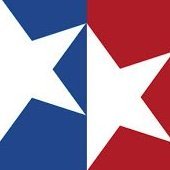
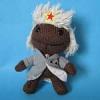


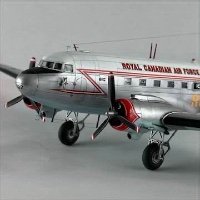


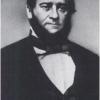


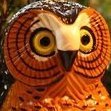

.thumb.jpg.ba34a9f6ddce411193946dbdcc7b5fe8.jpg)
